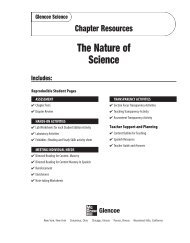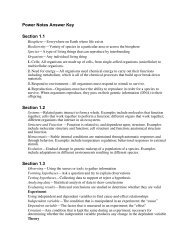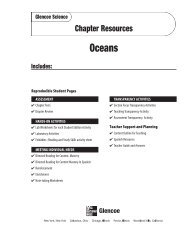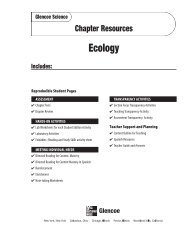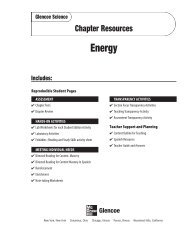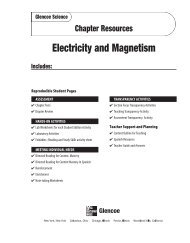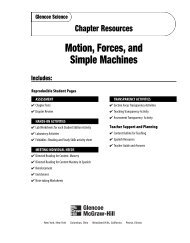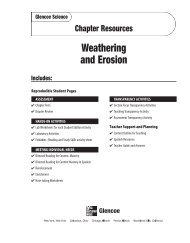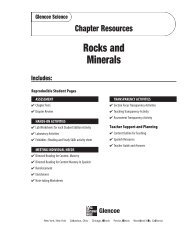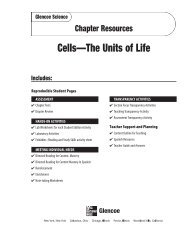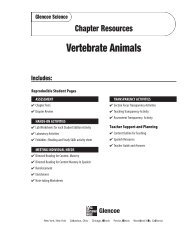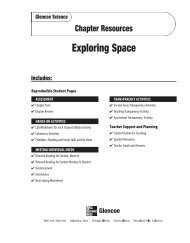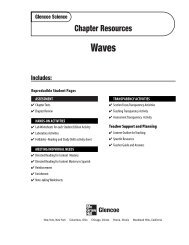Content Outline for Teaching - Potosi School District - Home
Content Outline for Teaching - Potosi School District - Home
Content Outline for Teaching - Potosi School District - Home
Create successful ePaper yourself
Turn your PDF publications into a flip-book with our unique Google optimized e-Paper software.
17<br />
Section 2<br />
<strong>Content</strong> <strong>Outline</strong><br />
<strong>for</strong> <strong>Teaching</strong><br />
Invertebrate Animals<br />
Sponges, Cnidarians, Flatworms, and Roundworms<br />
Underlined words and<br />
phrases are to be filled<br />
in by students on the<br />
Note-taking Worksheet.<br />
A. Sponges—don’t move to find food since adults are sessile or stuck in one place<br />
1. Filter feeders—filter food out of water that flows through body<br />
a. Pores let water into central cavity.<br />
b. Flagella keep water moving through sponge.<br />
2. Soft sponge bodies are protected by sharp spicules or rubbery spongin.<br />
3. Sponges reproduce sexually and asexually.<br />
a. In asexual reproduction a new sponge grows from pieces of an old sponge.<br />
b. Most sexually reproducing sponges are hermaphrodites,producing both<br />
eggs and sperm.<br />
B. Cnidarians—have tentacles and hollow bodies<br />
1. Two body shapes<br />
a. Polyp cnidarians are usually sessile and have vase-shaped bodies.<br />
b. A medusa body is free-swimming and bell-shaped.<br />
2. Cnidarians reproduce both sexually and asexually.<br />
a. Polyp <strong>for</strong>ms reproduce asexually by budding.<br />
b. Some polyps also reproduce sexually by releasing sperm or eggs.<br />
c. Medusa <strong>for</strong>ms have a two-stage life cycle in which they reproduce both sexually<br />
and asexually.<br />
C. Flatworms—search <strong>for</strong> their food<br />
1. Have long, flattened bodies with organs and systems<br />
2. Most are parasites living off or in a host.<br />
3. Tapeworms—a type of flatworm<br />
a. Lack a digestive system and absorb nutrients from the host’s intestines<br />
b. Tapeworms reproduce sexually.<br />
Invertebrate Animals 54




